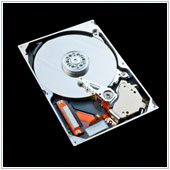 Hard disk drive capacities are increasing exponentially over time, yet somehow they always seem to fill up. This rings even more true for solid-state drives, which cost more but offer less storage space than conventional mechanical hard disks. If you’re brushing against your PC’s maximum storage capacity, using Disk Cleanup should help you free up space by getting rid of unimportant files and programs cluttering up your hard drive.
Hard disk drive capacities are increasing exponentially over time, yet somehow they always seem to fill up. This rings even more true for solid-state drives, which cost more but offer less storage space than conventional mechanical hard disks. If you’re brushing against your PC’s maximum storage capacity, using Disk Cleanup should help you free up space by getting rid of unimportant files and programs cluttering up your hard drive.
What is Disk Cleanup?
Disk cleanup is a tool that scans your computer’s hard drive for files that you no longer use. These include temporary files, cached web pages, and deleted items stored in your system’s Recycle Bin. Unless you periodically purge these files, they accumulate over time and take up a lot of space on your PC.
Disk Cleanup categorizes the identified files as well as the amount of storage space that each category occupies within your hard drive. From these items, you decide which ones to delete according to their importance to you and the amount of storage space that you’ll be able to recover.
How to use Disk Cleanup
In Windows 10, you can access Disk Cleanup by going to the Start menu and scrolling to Windows Administrative Tools.
Once opened, this tool automatically selects Drive C (though you can switch to other drives) and shows a list of file locations containing files that can be removed.
Each file location has a corresponding checkbox that needs to be selected in order to delete the files it contains. Upon clicking a file location, a description of the files it contains will appear at the bottom of the window so that you’ll know exactly the types of files you’ll be removing.
When Disk Cleanup is finished, you’ll need to restart your system to remove unnecessary Windows Update files. Remember, the Disk Cleanup tool only removes Update files that are no longer needed, hence usually very few are deleted.
The benefits of Disk Cleanup
Using the Disk Cleanup tool can help improve your computer’s performance by:
- Maximizing your drive’s memory – The ultimate benefits of cleaning up your disk are maximized computer storage space, increased speed, and improved functionality. These enable you to use your device to run at peak performance levels.
- Making your computer more reliable – Some programs that are downloaded through the internet may be infected with viruses that can decrease your computer’s reliability. The Disk Cleanup tool can clean your computer and rid it of unwanted programs as well.
- Saving time and increasing efficiency – The traditional way of opening folders to find and delete old files may be sufficient for some, but not for those who prioritize productivity. Although files can be deleted manually, Disk Cleanup can do this much faster.
The Disk Cleanup tool is as simple to launch and operate as any basic program. If you are looking to further improve the speed of your systems or are interested in other tech solutions, contact us today to learn more.



